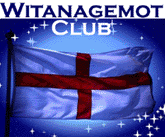During 2000, Nintendo announced that it would release a true successor to the 8-bit Game Boy handheld console series called the Game Boy Advance that was unveiled later in the year at the Nintendo Space World show. While the Nintendo GameCube attracted the lion’s share of attention (and criticism for its Fisher Price-type aesthetics), the original Game Boy Advance was greeted with near-universal praise for its combination of stylish design, impressive Super NES equivalent graphics capabilities and 15 to 20 hours of battery life. When the portable was released the following year, it became an instant success, quickly acquiring a diverse library of quality titles from conversions of 16-bit Super NES classics such as Super Mario World, The Legend of Zelda A Link To The Past and Yoshi’s Island to original gems like Advance Wars, Golden Sun and Mario & Luigi Superstar Saga. The compact format’s fortunes were also greatly aided by the inclusion of backwards-compatibility with the software libraries of both the Game Boy and Game Boy Color, which gave the Game Boy Advance instant access to an existing collection of over a thousand titles.
Although the Game Boy Advance series is commonly perceived as an array of portable Super NES consoles that also doubles up as a home for retro titles such as Manic Miner, Rayman Advance and Sonic The Hedgehog Genesis, it is also host to some terrific original software like Metroid Fusion, Spyro Season of Ice and the Sonic Advance trilogy. These original titles were often better than the best Super NES conversions because developers usually made more of an effort to make greater use of the Game Boy Advance’s technical capabilities as most of the Super NES translations were not only not as fully optimised for the portable as they could have been due to developer-laziness and built-in hardware limitations.
For what was conceived of as the handheld equivalent of the Super NES, the Game Boy Advance line is compromised by the omission of the Super NES controller’s X and Y face buttons. It was claimed that these two triggers were not included because Nintendo did not want to encourage third-party publishers and developers from converting Super NES titles to the Game Boy Advance family. However, considering that Nintendo themselves were responsible for most of the high profile Super NES translations and that the Super NES originals had usually used only four of the Super NES controller’s six buttons, it is more likely that the lack of triggers were due to cost cuts. While this decision rarely if ever rendered conversions of six button titles unplayable, some releases were still somewhat compromised such as Capcom’s Super Street Fighter II Turbo Revival and Street Fighter Alpha 3 Upper. The Game Boy Advance systems’ audio processor is also rather inferior to its Super NES Sony-developed counterpart, though it is still a capable instrument.
The initial Game Boy Advance also somewhat suffered from Game Boy and Game Boy Color cartridges awkwardly protruding out of the cartridge slot away from players and the absence of any internal lighting as it is at times difficult to see what is on the machine’s wide colour screen with even decent external lighting conditions. These problems were rectified by the release of the Game Boy Advance SP during 2003. Though it lacks the aesthetic elegance of both the original Game Boy Advance and the later-released Game Boy micro, the Game Boy Advance SP did include internal front lighting (a second-generation Game Boy Advance SP with improved internal lighting behind the visual display was released two years later) with 8-bit Game Boy series cartridges discreetly protruding towards gamers. This was achieved by using an internal lithium ion battery instead of traditional AA batteries (with beneficial side effect of saving owners the expense of regularly purchasing replacement standard batteries) at the cost of the internal lighting reducing playing time to just over ten hours when switched on (the battery life increases to eighteen hours when the lighting is off).
The final portable incarnation of the Game Boy Advance, the Game Boy micro, was released during 2005. Although this edition of the Game Boy Advance has the finest aesthetic design of the production line and adjustable light settings, the system failed to reproduce the commercial success of its predecessors because consumers owned one of or both the previous versions of the format and preferred instead to purchase either a variant of the Nintendo DS or Sony’s PSP. It also did not help that the Game Boy micro is incompatible with all Game Boy and Game Boy Color titles.
The biggest reason for the Game Boy Advance franchise’s success was of course the software library. A console stands or falls by whether it has a varied collection of quality titles and the Game Boy Advance was no exception. The portable has at least one classic game across almost every genre from the usual suspects to more obscure releases such as the critically acclaimed conversion of the popular PC CD-ROM and PlayStation title Broken Sword The Shadow of the Templars. Another key feature of the Game Boy Advance’s popularity was its ability to host simultaneous four-player games such as Bomberman Tournament, ChuChu Rocket and Mario Kart Super Circuit with just a single cartridge. The Game Boy Advance collection could also be connected to the Nintendo GameCube to access special features in certain titles and a couple of e-reader scanners were released that could upload basic games from cards, but these accessories were rather limited in there execution. A more successful Game Boy Advance-related peripheral was the Game Boy Player for the Nintendo GameCube, which could operate Game Boy, Game Boy Color and Game Boy Advance cartridges through the television-based console as the Super Game Boy series allowed with the original Game Boy’s titles on the Super NES.
The Game Boy Advance franchise is one of the greatest consoles in videogame history with something for everyone to enjoy. It has old and original classics that cater towards the tastes of both the most casual and the most of dedicated of gamers alike, whether young or old.










No comments:
Post a Comment